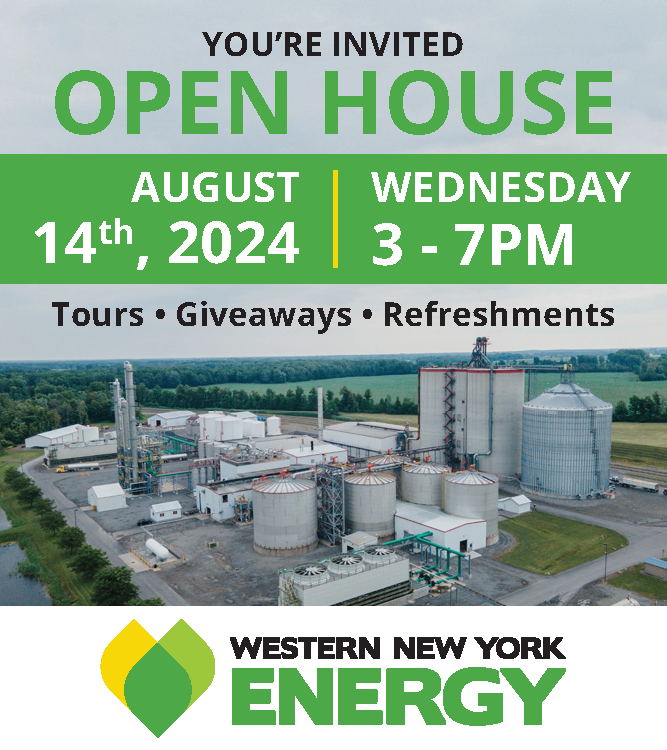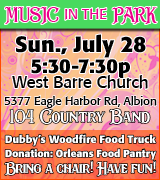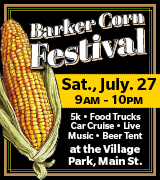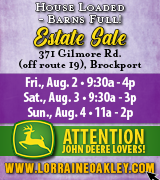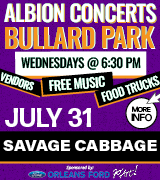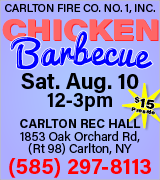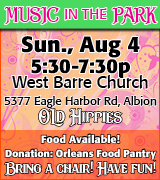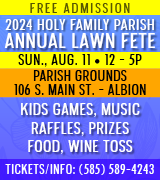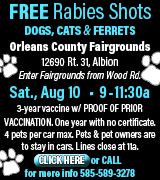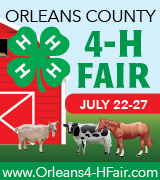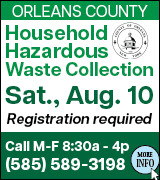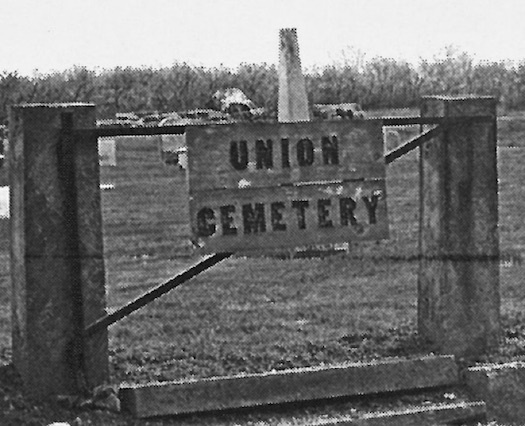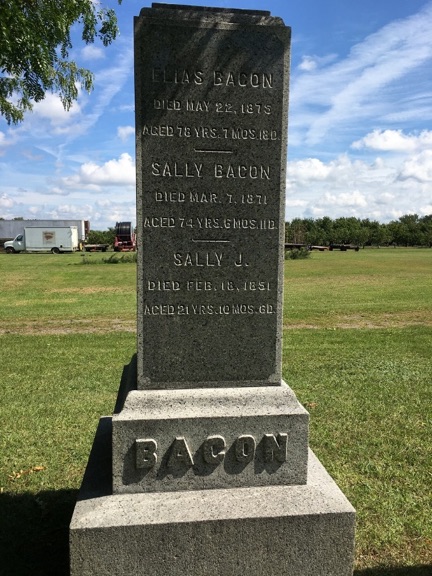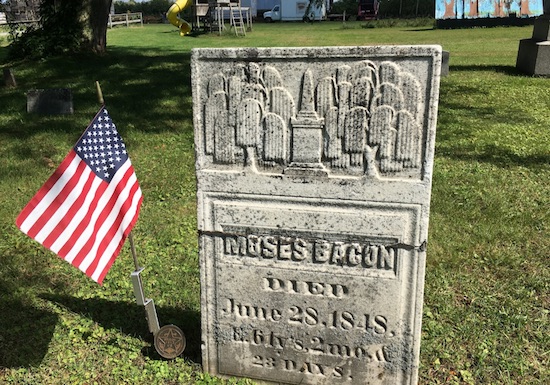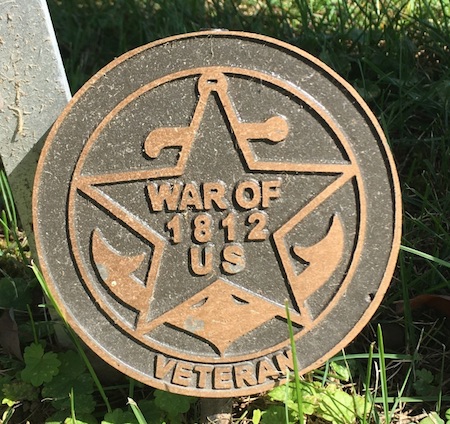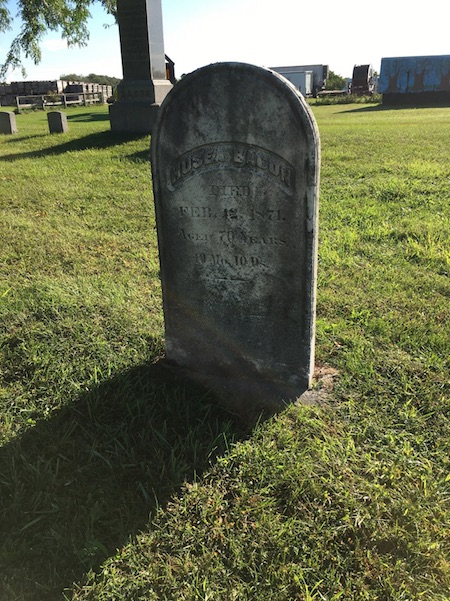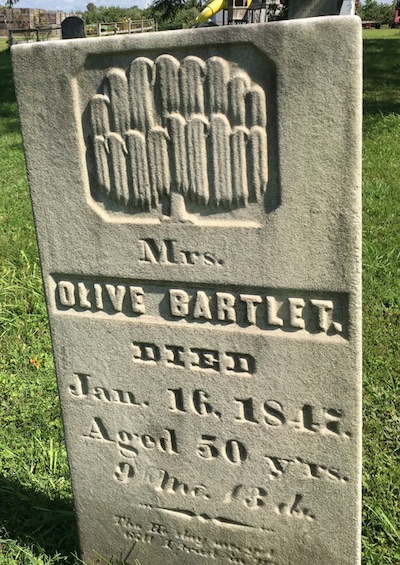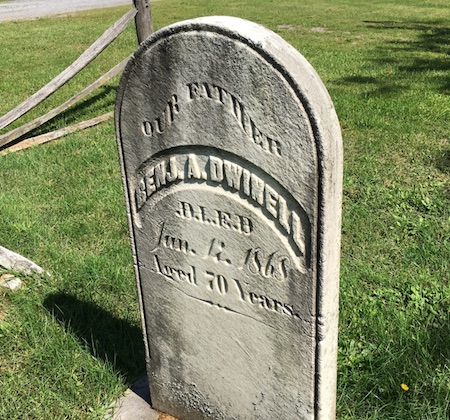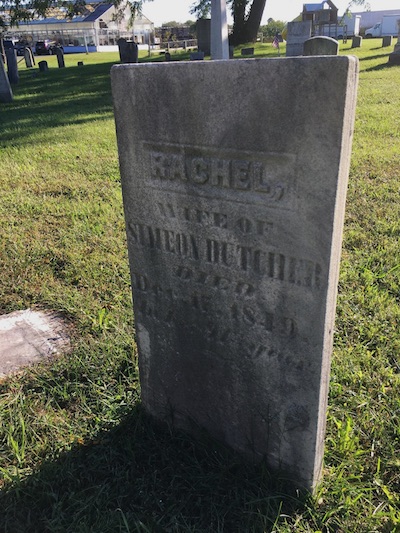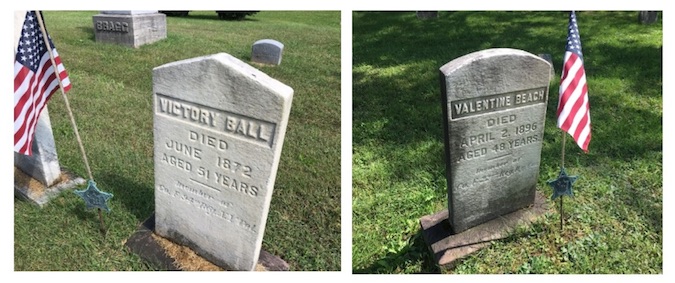Historic Childs: Five Corners, Part 2 – The Union Cemetery
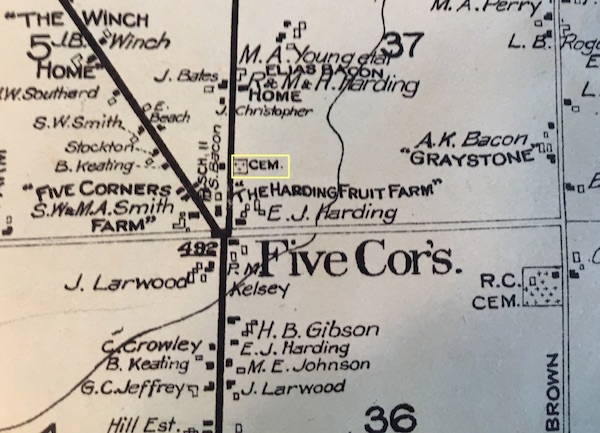
1913 Orleans County New Century Atlas
By Doug Farley, Cobblestone Museum Director – Vol. 2 No. 38
GAINES – Just south of the hamlet of Childs lies the crossroad community of Five Corners, easily identifiable by its nexus of five roads that meet in a star pattern. Recently, in Part 1 of this article we looked at the Bacon family and their contributions to the hamlet which included providing a lot of land for a school and a lot for a cemetery. In today’s article we focus on the Union Cemetery at Five Corners.
A meeting of Town of Gaines residents took place on May 8, 1834 at the home of Lewis Gates, in order to discuss the creation of a burying ground. Elias Bacon was selected as Moderator and Hosea Bacon, Lewis Gates, Samuel Hill, James Leonard and Seth Leonard were chosen to serve as Trustees to secure a title for a piece of land for that purpose. On April 21, 1835 the Trustees accomplished their duties and took title to a plot of land purchased from Moses and Sarah Bacon.
The cemetery land, adjacent to the Fair Haven Road, ran 100 feet by 90 feet and was further subdivided into 40 burial plots approximately 10 feet square. The cemetery was only described as a “burying ground” on survey maps until 1853 when a group of citizens met again, this time for the purpose of forming a rural cemetery association. The meeting took place at the Cobblestone District #11 Schoolhouse. The group elected Trustees and voted that the association be called the Union Cemetery Association and decided that an annual meeting be held each year at the Schoolhouse on the first Tuesday in October at 6 p.m.
At a later meeting of the Association, it was decided that Elias Bacon was to furnish materials and build a fence around the cemetery. To reimburse Mr. Bacon for his duties he was to be reimbursed by a levy of $3.44 on each plot.
Although the name selected for the cemetery was officially “The Union Cemetery,” lacking a sign, local residents usually called it the Five Corners Cemetery or the Harding Farm Cemetery. It wasn’t until the 1980s that the lack of a sign on the cemetery was corrected, when Russell West, a local Boy Scout, placed a wooden sign at the west end of the property and a wooden bench in the interior. In more recent times, it appears the sign on the property is missing once more.
Many times, the history of a community is told through the gravestones of its local cemetery, and the Union Cemetery is no exception. Moses, Elias and Hosea Bacon, who provided for the creation of the cemetery, along with many early settlers of Five Corners, are all buried here.
Moses Bacon arrived here in 1809. As mentioned in the previous article, he was wounded and taken prisoner during the War of 1812. He built the brick home at the Corners in 1835.
A special War of 1812 marker was added to Moses Bacon’s grave a few years ago.
Hosea Bacon, also interred at the Union Cemetery, constructed the Cobblestone Home on Brown Road, known as Graystone Farm beginning in 1835.
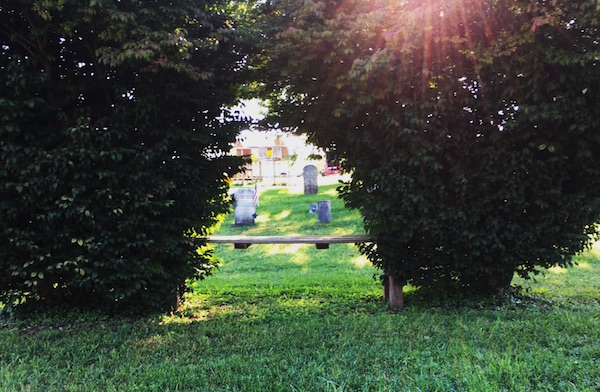
Boy Scout Eagle Project built by Russell West
Rebecca Baker, originally from Rensselaer County, was a Methodist minister of some local note. She eventually settled on a farm in Carlton and is buried in Union Cemetery along with her husband and six children.
Mrs. Olive Bartlett and her husband came to this area on one of the first canal boats to travel to Buffalo in 1825.
Benjamin Dwinnell, a blacksmith from New Hampshire, was an uncle to famed newspaper man, Horace Greeley of New York City. Mr. Greeley agreed to co-sign a mortgage for his nephew on the Dwinnell’s Cobblestone House in Childs. Today, the home is known as the Ward House, and is part of the National Historic Landmark Cobblestone District. The Dwinnell’s, along with daughter Lucy, are buried in Union Cemetery.
Simeon Dutcher and his wife, Rachel, are buried here. Mr. Dutcher was born in Dutchess County in 1772 and settled in Gaines in 1817. He was ordained an elder of the Baptist Church and was one of the first preachers for local settlers, officiating at many early marriages and funerals. During the Anti-Masonic Movement of the 1820s, he was told to renounce Free Masonry, which he refused to do, and was subsequently ex-communicated from his church.
Four Civil War veterans also are found in the Union Cemetery. Victory Ball was wounded in the shoulder at the Second Battle of Bull Run. Joseph Cook was killed near Fairfax Station, Virginia at the age of 22. Also interred here are veterans Henry Watson and Valentine Beach.
The majority of those buried in Union Cemetery are related to one another, and nearly half were under the age of 18 when they died. On the original plot map for the cemetery, a plot known as #22 was reserved for “strangers.” The last burial recorded for the cemetery took place in 1910.



















